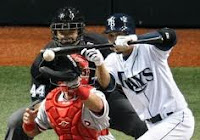 |
| Typical Bobby V. |
Boston Red Sox - The number one surprise has to go to the Bosox. Experts from all across the baseball world were not only picking them to finish in first place in the AL East, but some were even predicting them to go all the way. This team surprised me for sure. As a Yankee fan I was concerned that with this Sox team and the Rays, the Yanks would not even make the post season. With a powerful lineup and a pitching staff with names like Beckett, Bucholz and Lester, they were a shoe-in. Yeah, a shoe-in for their worst record in 30 years. Oh, this just in - Bobby V is no longer the Manager - that should not be in this post since this is NOT a surprise. My opinion - they're not going to be the same without Theo.
Baltimore Orioles - When I was young I had a love hate relationship with the O's. I loved them because they were enjoyable to watch and a great team. I hated them because they always seem to beat my Yanks. Earl Weaver and his damn 3 run homer. This team combined with the Rays make the Al East a new and exciting division which no longer belongs to Boston or NY. Buck Showalter not only built a winner, but a team that is beaming with confidence. The O's play some good ball. I don't think there is a player on that team that does not hustle or know his role (and is darn good at it). Well if there was, they would immediately be on Buck's you-know-what list.
 |
| Billy Beane |
Washington Nats - You may say - "any baseball fan could have predicted this one". Yes, maybe, but 98 wins!! This was a team built and bought - to win! This successful team got even better throughout the season. With the mid-season call-up of Bryce Harper, and Ryan Zimmerman finding his stroke in a big way simply added to the winning combo. I still feel it was as bad decision to shutdown Stephen Strausburg for the season. My opinion - they may miss Strausburg if they make the World Series.
 |
| Mike Trout |
On the individual side of things there weren't many surprises. Some players performed above or below expectations, but that's not really a surprise. The one player that took everyone by surprise was rookie Mike Trout. Trout is a very exciting player who put up nice numbers (not only for a rookie, but a veteran as well). If his head or PED's don't get in the way we may be looking at the next Mickey Mantle.
And those are my surprises. I'm hoping to post more often with some history, stats, strategy, rules, observations and more.
Thanks for reading
-Tom





























